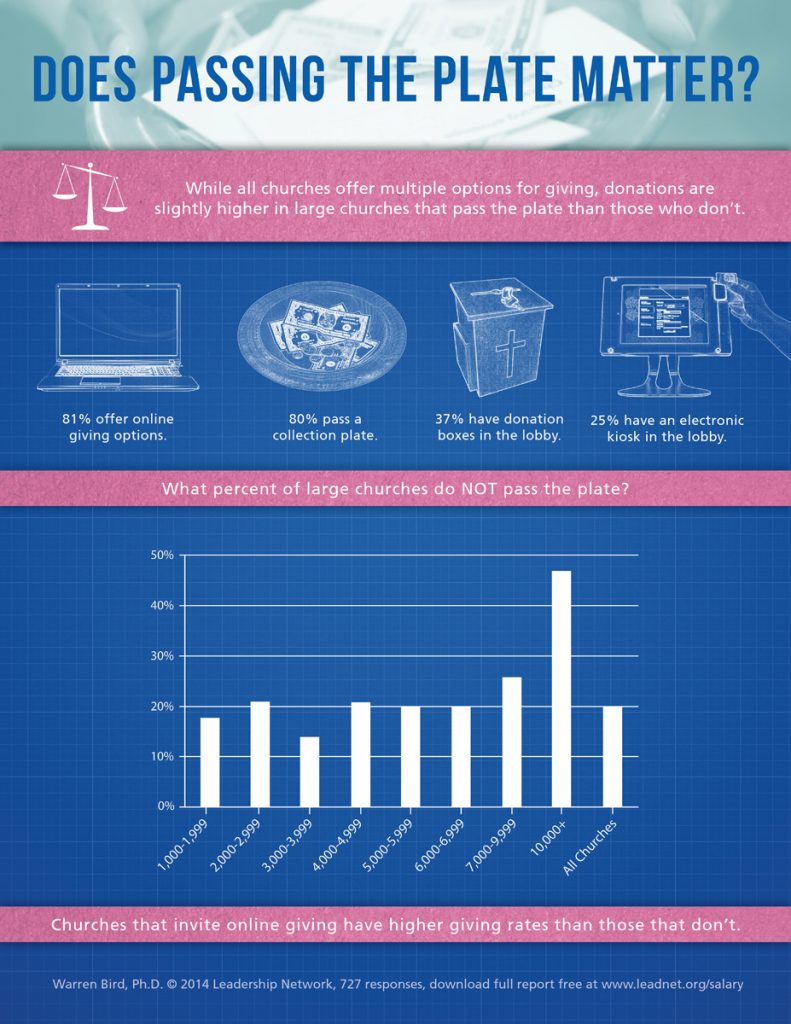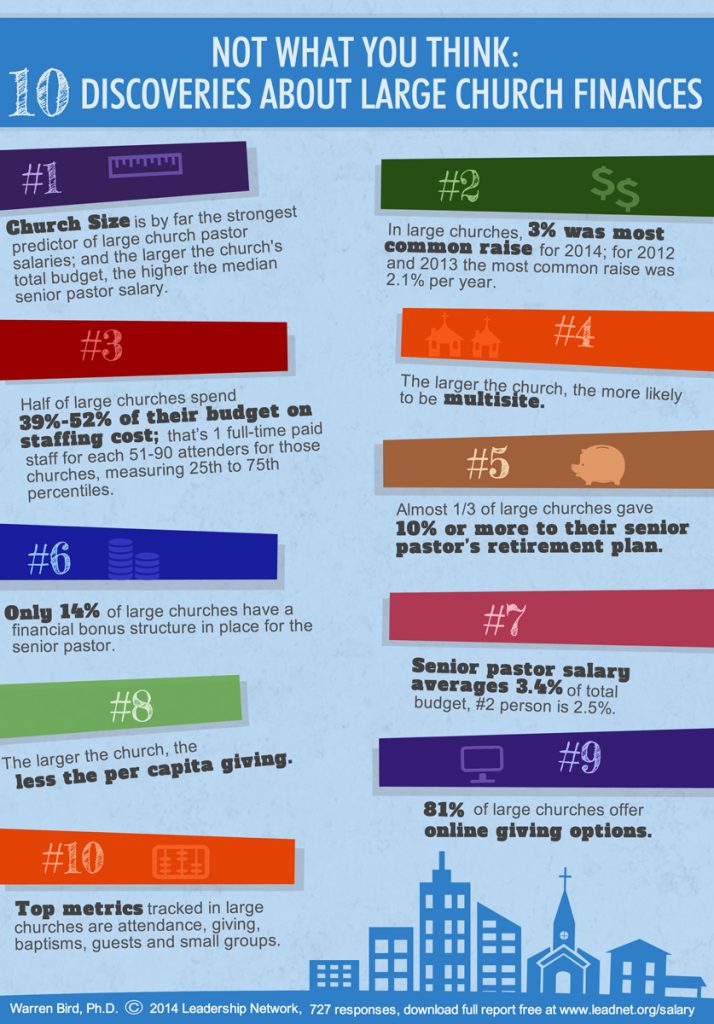
By Adelle M. Banks
RELIGION NEWS SERVICE (RNS) — Large churches in the South tend to pay their senior pastors the highest salaries, a new survey finds.
That’s one of the conclusions on churches and finances released Tuesday (Sept. 9) by Leadership Network, a Dallas-based church think tank, and the Vanderbloemen Search Group, a Houston-based executive search firm for churches and ministries. A total of 727 churches in the U.S. and Canada with attendance ranging from 1,000 to more than 30,000 answered questions, more than double the number of congregations featured in previous studies.
The survey found that 14 percent of large churches have a financial bonus structure for their top leader. And one in five of the big congregations find ways to collect their money other than passing the proverbial offering plate.
Warren Bird, research director at Leadership Network, said pastors have long held a lofty place of authority in the South, and that may be why they are paid more in that region.
RELATED RESOURCES:
- Negotiating pastor salary
- Extensive survey report of North American church salaries
- Common but costly compensation errors
Northeastern churches are the second-highest paying, followed by the West and the Midwest. The lowest-paying region is Canada.
The higher pastor salaries in the South contrast with lower-than-average wages for the region. The Department of Labor Bureau of Labor Statistics reports average annual wages of workers in all the states in the Deep South — Alabama, Georgia, Louisiana, Mississippi, South Carolina — are lower than the U.S. annual wage of $49,804.
Although researchers agreed not to divulge specific salaries of particular pastors or the identity of participating churches, they were able to determine trends in these congregations that reflect about one-quarter of the nation’s Protestant worshippers. For example:
- The larger the church, the more the senior pastor is likely to be paid.
- The second-in-command at many churches earns about 70 percent of the salary of the top executive.
- Three-quarters of the churches gave pay raises between 1 and 5 percent and the most common raise was 3 percent for 2014.

“Bigger means more employees, more volunteers, more moving parts and a greater scope of leadership required,” Bird said. “That reality usually leads to more compensation across a host of organizations.”
In fact, the common pay raise also reflects a wider social trend. Towers Watson, a Virginia-based professional services company, released a separate survey Monday (Sept. 8) that found that U.S. employers plan to give their professional employees an average pay raise of 3 percent in 2015.
Researchers for the large-churches survey found that donations are slightly higher at those churches that pass the plate, but all churches in the study offered more than one option for giving: 81 percent provide online giving options; 37 percent had a donation box in the lobby; and 25 percent had an electronic kiosk in the lobby. Far surpassing churches of other sizes, congregations with more than 10,000 worshippers were least likely to pass offering plates.
“If your stereotype is that every church passes the plate, they don’t,” said Bird.
Online giving has been growing in popularity for seven years, Bird said. He recently visited a church in Australia that gets 80 percent of its donations via the Internet. One Maryland megachurch gets 40 percent of its giving through online donations.
How much do congregants know about the finances of their churches? Bird said most congregations will get some kind of a report from their leaders.
“It is extremely rare that the entire congregation will be privy to specific salaries,” he said.
But even people with inside knowledge about church salaries need to know more about how to handle their finances, said Holly Tate, director of business development at Vanderbloumen.
“Churches are known to fall behind in compensation trends and they end up losing their staff because of it,” she said.
The survey also found:
- 80 percent of the large churches were predominantly white, while 20 percent were made up mostly of another racial or ethnic group or were multiethnic.
- The larger the church, the more likely it is to be a multisite

Not What You Think: 10 Discoveries About Large Church Finances,” graphic courtesy of Leadership Network
Adelle M. Banks joined the Religion News Service staff in 1995.She previously was the religion reporter at the Orlando Sentinel and a reporter at The Providence Journal and newspapers in the upstate New York communities of Syracuse and Binghamton. A graduate of Mount Holyoke College in South Hadley, Mass., she spearheaded an RNS project on the March on Washington that won a 2014 Wilbur Award from the Religion Communicators Council. Banks was a third-place winner in the Religion Newswriters Association’s Religion Reporter of the Year contest in 2011 and 1998. She also has been honored by Associated Church Press.


